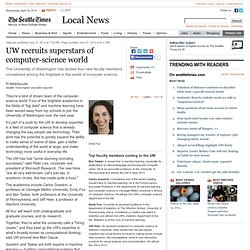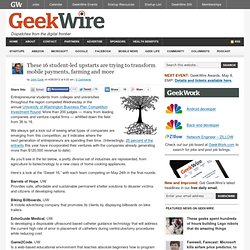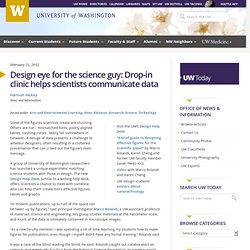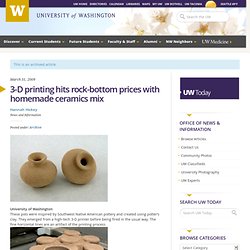

GBD Compare. Une méthode de dépistage des maladies génétiques plus performante. Sans avoir recours à des tests invasifs, des chercheurs de l'université de Washington à Seattle (États-Unis) sont parvenus à identifier le premier génome entier d'un fœtus à partir d'un seul échantillon de sang d'une femme enceinte et de la salive du père.

Inédite, cette méthode sans risques pour le fœtus permettrait de prévenir à l'avance certaines maladies génétiques à travers un séquençage total du génome. L'étude, réalisée par une équipe de quatorze scientifiques, est parue mercredi 6 juin dans la revue médicale américaine Science Translational Medicine. Se basant sur le fait que le sang d'une femme enceinte contient déjà des cellules de l'ADN du fœtus, un échantillon de sang a été prélevé sur une femme enceinte de 18 semaines et demi.
Le test a été répété sur une deuxième femme, enceinte depuis moins longtemps. Les chercheurs ont ensuite vérifié leurs prédictions en prélevant du sang présent dans le cordon ombilical à la naissance. Le journal américain s'interroge néanmoins. University of Washington on coursera. Intro to Data Science. UW recruits superstars of computer-science world. Originally published June 27, 2012 at 7:30 PM | Page modified June 27, 2012 at 8:31 PM They're a kind of dream team of the computer-science world: Four of the brightest academics in the fields of "big data" and machine learning have been wooed away from top schools to join the University of Washington over the next year.

It's part of a push by the UW to develop expertise in a field of computer science that is already changing the way people use technology. Their work has the potential to greatly expand the ability to make sense of reams of data, gain a better understanding of the world at large, and make technology more useful in everyday life. The UW has had "some stunning recruiting successes," said Peter Lee, corporate vice president of Microsoft Research. The new hires "are all very well-known. All four will teach both undergraduate and graduate courses, and do research. Grow the next generation of ideas. Hackademia — where you don't have to be an expert to be an innovator. These 16 student-led upstarts are trying to transform mobile payments, farming and more. Entrepreneurial students from colleges and universities throughout the region competed Wednesday in the annual University of Washington Business Plan Competition Investment Round.

More than 200 judges — many from leading companies and venture capital firms — whittled down the field from 36 to 16. We always get a kick out of seeing what types of companies are emerging from this competition, as it indicates where the next-generation of entrepreneurs are spending their time. (Interestingly, 25 percent of the entrants this year have incorporated their ventures with the companies already generating more than $120,000 revenue to date). As you’ll see in the list below, a pretty diverse set of industries are represented, from agriculture to biotechnology to a new class of home cooking appliances. Here’s a look at the “Sweet 16,” with each team competing on May 24th in the final rounds. GroBox, UW Aims to make it super easy to grow your own fruits and vegetables in a small amount of space. Design eye for the science guy: Drop-in clinic helps scientists communicate data — University of Washington - washington.edu.
Some of the figures scientists create are stunning.

Others are not – mismatched fonts, poorly aligned tables, clashing colors. Many fall somewhere in between. Blaise Aguera y Arcas demos Photosynth. Solve Puzzles for Science. Gamers succeed where scientists fail — University of Washington - washington.edu. Gamers have solved the structure of a retrovirus enzyme whose configuration had stumped scientists for more than a decade.

The gamers achieved their discovery by playing Foldit, an online game that allows players to collaborate and compete in predicting the structure of protein molecules. After scientists repeatedly failed to piece together the structure of a protein-cutting enzyme from an AIDS-like virus, they called in the Foldit players. The scientists challenged the gamers to produce an accurate model of the enzyme. They did it in only three weeks. High resolutionClick to expand Dr. “We wanted to see if human intuition could succeed where automated methods had failed,” said Dr. Remarkably, the gamers generated models good enough for the researchers to refine and, within a few days, determine the enzyme’s structure. Washington. This story is, literally, stone age meets digital age: University of Washington researchers are combining the ancient art of ceramics and the new technology of 3-D printing.

Along the way, they are making 3-D printing dramatically cheaper. About five years ago, Mark Ganter, a UW mechanical engineering professor and longtime practitioner of 3-D printing, became frustrated with the high cost of commercial materials and began experimenting with his own formulas. He and his students gradually developed a home-brew approach, replacing a proprietary mix with artists’ ceramic powder blended with sugar and maltodextrin, a nutritional supplement. The results are printed in a recent issue of Ceramics Monthly. Co-authors are Duane Storti, UW associate professor of mechanical engineering, and Ben Utela, a former UW doctoral student. “Normally these supplies cost $30 to $50 a pound. Recipes are available on the magazine’s Web site at The lab can go through $4,000 of materials per quarter, he said. 3D printing: Difference Engine: Making it.
3D printing: A third-world dimension.